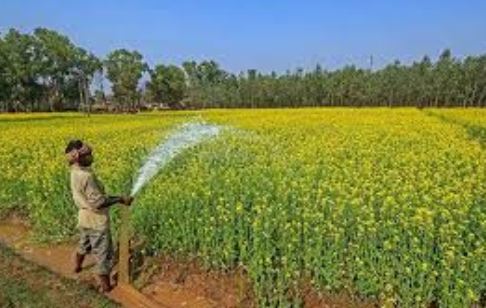Adapting to Climate Change
In the picturesque hill state of Himachal Pradesh, a profound shift is occurring among apple farmers. Confronted with the dual challenges of climate change and soil degradation, many growers are turning to crop diversification. This transformation, driven by the need to sustain agricultural productivity, is reshaping the region’s agricultural landscape.
Apple orchards, once the cornerstone of Himachal’s fruit cultivation, are increasingly being replaced by a variety of other fruits. The shift is not merely a trend but a strategic response to changing climatic conditions and the necessity for better soil conservation practices. The rise of new fruit crops such as persimmon, jackfruit, litchi, kiwi, and cherry highlights this pivotal change.
The Surge in Fruit Diversification
The cultivation of persimmon, locally known as khurma, has experienced remarkable growth over the past decade. Production has surged from 519 metric tons (MT) in 2013-14 to 1,201 MT in 2022-23. This increase is accompanied by an expansion in cultivation area from 403 hectares to 624 hectares. Kullu district, in particular, has become a major hub for persimmon production, contributing 1,005 MT of the total yield.
Similarly, jackfruit production has seen substantial growth. From a modest 448 MT in 2013-14, it has risen to 748 MT, with cultivation expanding from 723 hectares to 1,821 hectares. This increase underscores the successful adaptation of local farmers to new fruit varieties.
Litchi production also demonstrates significant progress. The state’s production doubled from 3,275 MT in 2013-14 to 6,175 MT in 2022-23, with cultivation area expanding from 4,972 hectares to 6,501 hectares. Kangra district plays a crucial role, contributing over 50% of the total yield for both jackfruit and litchi.
Economic and Environmental Benefits
The move towards fruit diversification is not solely driven by economic benefits. It also addresses environmental and soil conservation concerns. Vishal Thakur, a persimmon grower from Kullu, explains that his community transitioned from apple cultivation due to the declining health of apple trees. Persimmon, in contrast, offers quicker returns and longevity, with each plant producing up to 35 kg of fruit and fetching between Rs 80 to Rs 180 per kilogram.
Agriculturist Deepak Singha highlights additional advantages, including reduced soil vulnerability to diseases associated with single-crop cultivation. The shift to fruits like cherry, jackfruit, and persimmon also involves lower investment costs and enhances soil fertility through diversification.
Kiwi, another fruit experiencing significant growth, saw production increase from 114 MT in 2013-14 to 766 MT in 2022-23, with cultivation expanding from 113 hectares to 197 hectares. Solan district has emerged as a leading producer, contributing 455 MT of the total kiwi yield.
Dr. Usha Sharma, a senior scientist at Dr. Y.S. Parmar University of Horticulture and Forestry, Nauni, underscores the importance of fruit diversification for maintaining soil health. She notes that different elevations in Himachal Pradesh offer unique advantages for various fruit crops, making diversification both a practical and beneficial strategy.
Challenges and Future Outlook
Despite the promising growth in fruit diversification, challenges remain. The overall production from the total fruit cultivation area, including apples, still requires improvement. Vinay Singh, Director of the Himachal Pradesh Horticulture Department, acknowledges that while apples continue to dominate the state’s fruit production, there is a concerted effort to encourage the cultivation of other fruits. This approach is yielding positive results and contributing to the state’s reputation as a fruit bowl.
In 2021-22, Himachal Pradesh’s total fruit production was 7.53 MT from 2.35 lakh hectares, with apples contributing 6.11 MT. The apple cultivation area also accounted for a substantial portion, 1.15 lakh hectares of the total 2.35 lakh hectares.
Summary
In response to climate change and soil conservation needs, Himachal Pradesh’s apple farmers are increasingly adopting fruit diversification. The successful cultivation of persimmon, kiwi, and cherry illustrates a strategic shift towards more sustainable and economically viable agricultural practices. While apples remain a staple, the growing variety of fruit crops signifies a progressive approach to overcoming environmental challenges and enhancing agricultural productivity.
Key Learning Points
| Point | Description |
|---|---|
| Shift to Fruit Diversification | Apple farmers in Himachal Pradesh are increasingly cultivating a variety of fruits. |
| Growth in Fruit Production | Significant increases in the production of persimmon, jackfruit, litchi, and kiwi. |
| Benefits of Diversification | Improved soil health, quicker returns, and reduced investment costs. |
| Ongoing Challenges | Despite progress, overall fruit production needs further improvement. |
| Role of Key Districts | Kullu, Kangra, and Solan districts play significant roles in fruit production. |
Soumya Smruti Sahoo is a seasoned journalist with extensive experience in both international and Indian news writing. With a sharp analytical mind and a dedication to uncovering the truth, Soumya has built a reputation for delivering in-depth, well-researched articles that provide readers with a clear understanding of complex global and domestic issues. Her work reflects a deep commitment to journalistic integrity, making her a trusted source for accurate and insightful news coverage.



